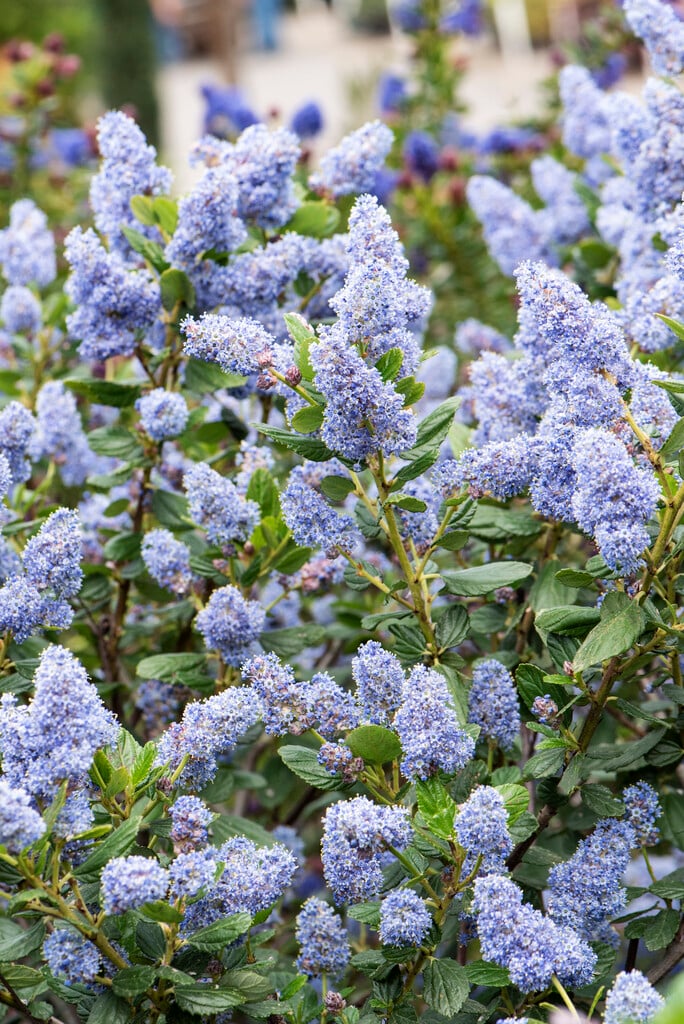Ceanothus arboreus 'Trewithen Blue'

felt-leaf ceanothus 'Trewithen Blue'
A large vigorous, spreading evergreen shrub to 6m in height, with broadly oval or rounded dark green leaves to 8cm in length, and slightly fragrant, mid-blue flowers in pyramidal panicles to 12cm in length, borne in spring and early summer
Size
Ultimate height
4–8 metresTime to ultimate height
5–10 yearsUltimate spread
4–8 metresGrowing conditions
Moisture
Well–drainedpH
Alkaline, Neutral, AcidColour & scent
| Stem | Flower | Foliage | Fruit | |
| Spring | Blue | Green | ||
|---|---|---|---|---|
| Summer | Blue | Green | ||
| Autumn | Green | |||
| Winter | Green |
Position
- Full sun
Aspect
West–facing or South–facing
Exposure
ShelteredDrought resistance
Yes Hardiness
H4Botanical details
- Family
- Rhamnaceae
- Native to GB / Ireland
- No
- Foliage
- Evergreen
- Habit
- Bushy, Spreading branched
- Genus
Ceanothus can be evergreen or deciduous shrubs or small trees, with simple leaves and small blue, pink or white flowers in profuse axillary or terminal clusters. They are fast-growing but may be short-lived
- Name status
Accepted
How to grow
Cultivation
Grow in fertile, well-drained soil in full sun with shelter from strong, cold winds. Lime tolerant but may become chlorotic on shallow chalk soils. See ceanothus cultivation
Propagation
Propagate by semi-ripe cuttings in mid- to late summer
Suggested planting locations and garden types
- Architectural
- City and courtyard gardens
- Coastal
- Cottage and informal garden
- Mediterranean climate plants
- Wildlife gardens
- Wall side borders
- Climber and wall shrubs
Pruning
Pruning group 8 after flowering or pruning group 13 if wall trained
Pests
May be susceptible to scale insects
Diseases
May be susceptible to honey fungus
Get involved
The Royal Horticultural Society is the UK’s leading gardening charity. We aim to enrich everyone’s life through plants, and make the UK a greener and more beautiful place.
